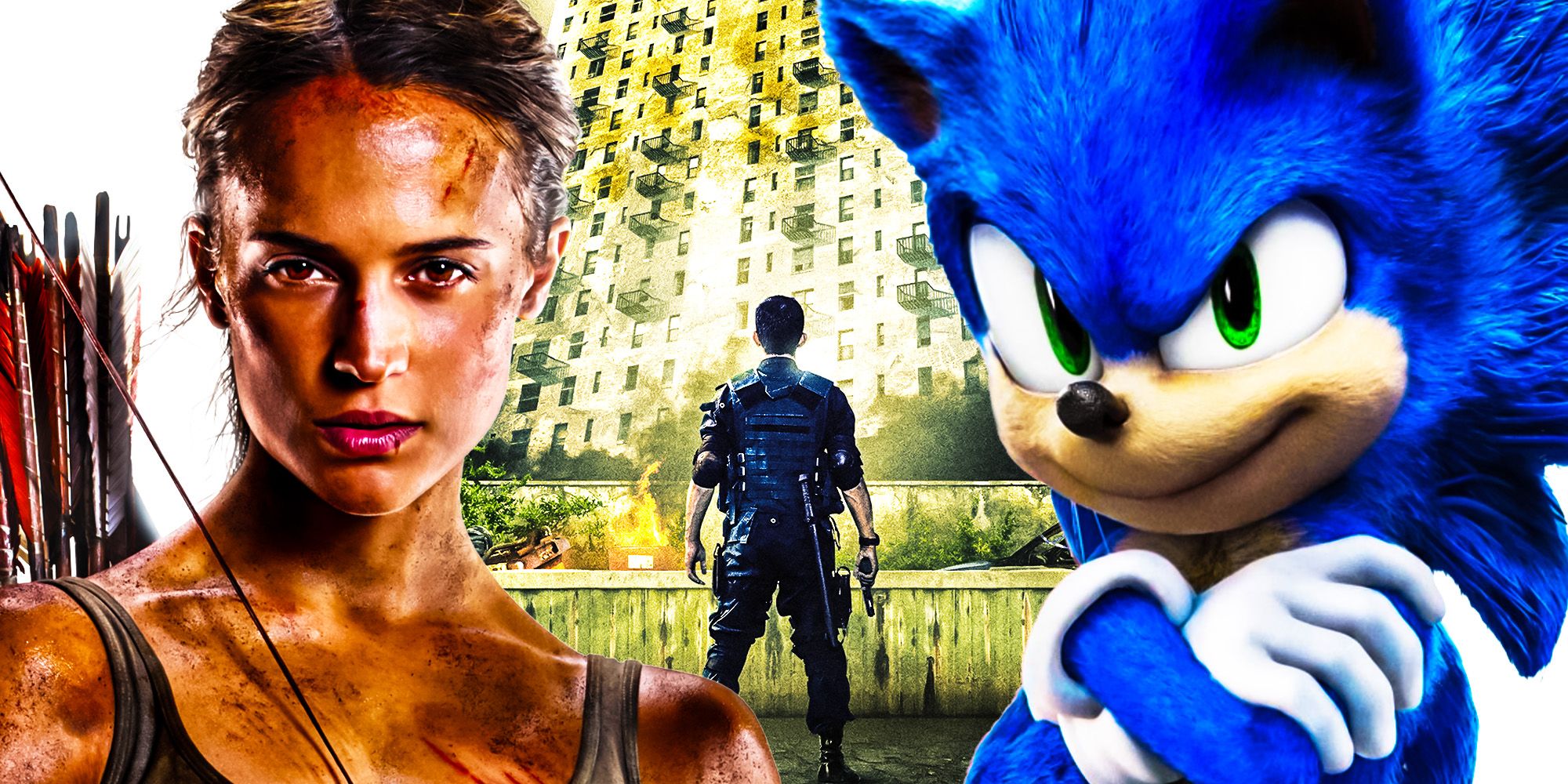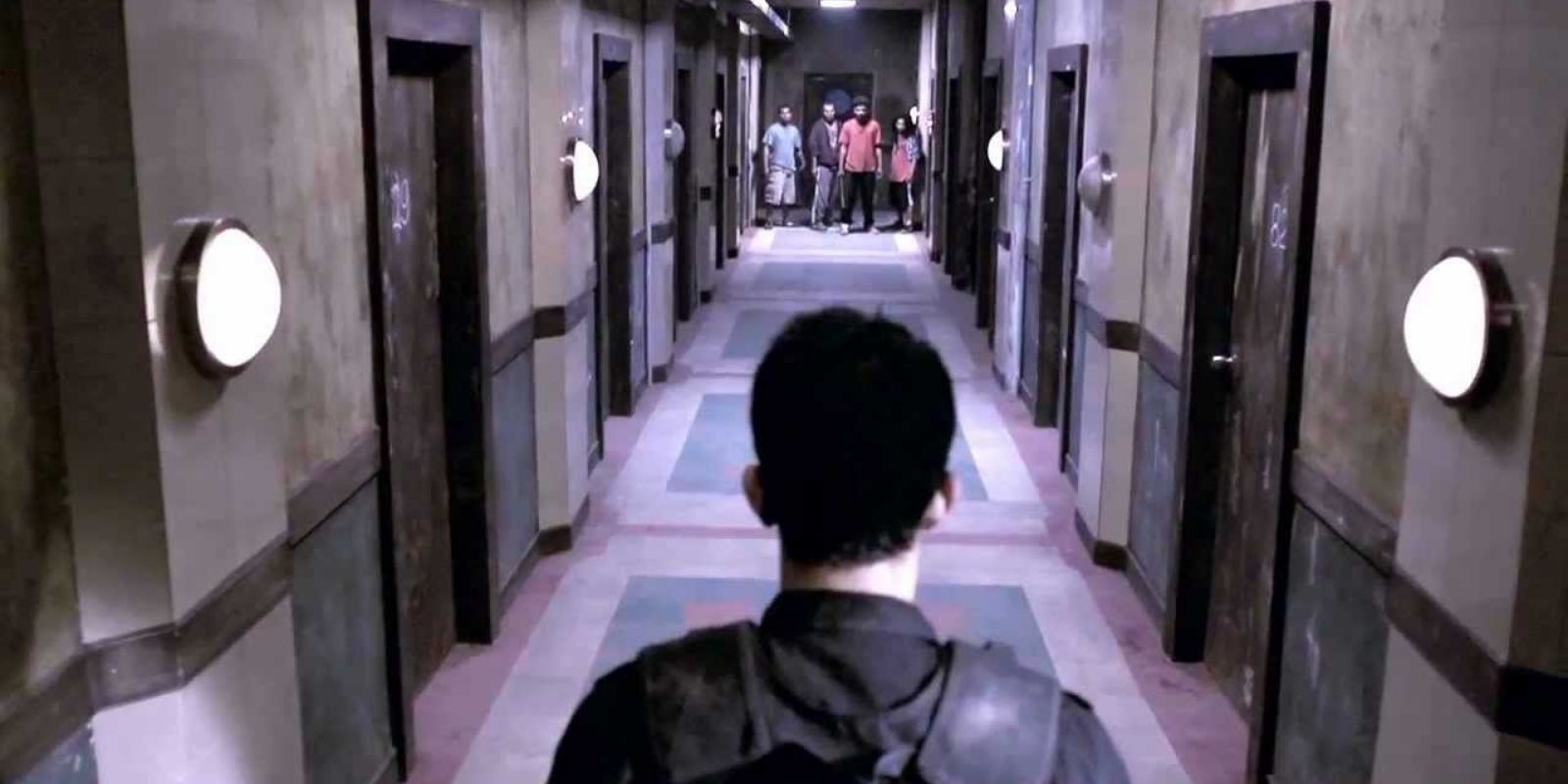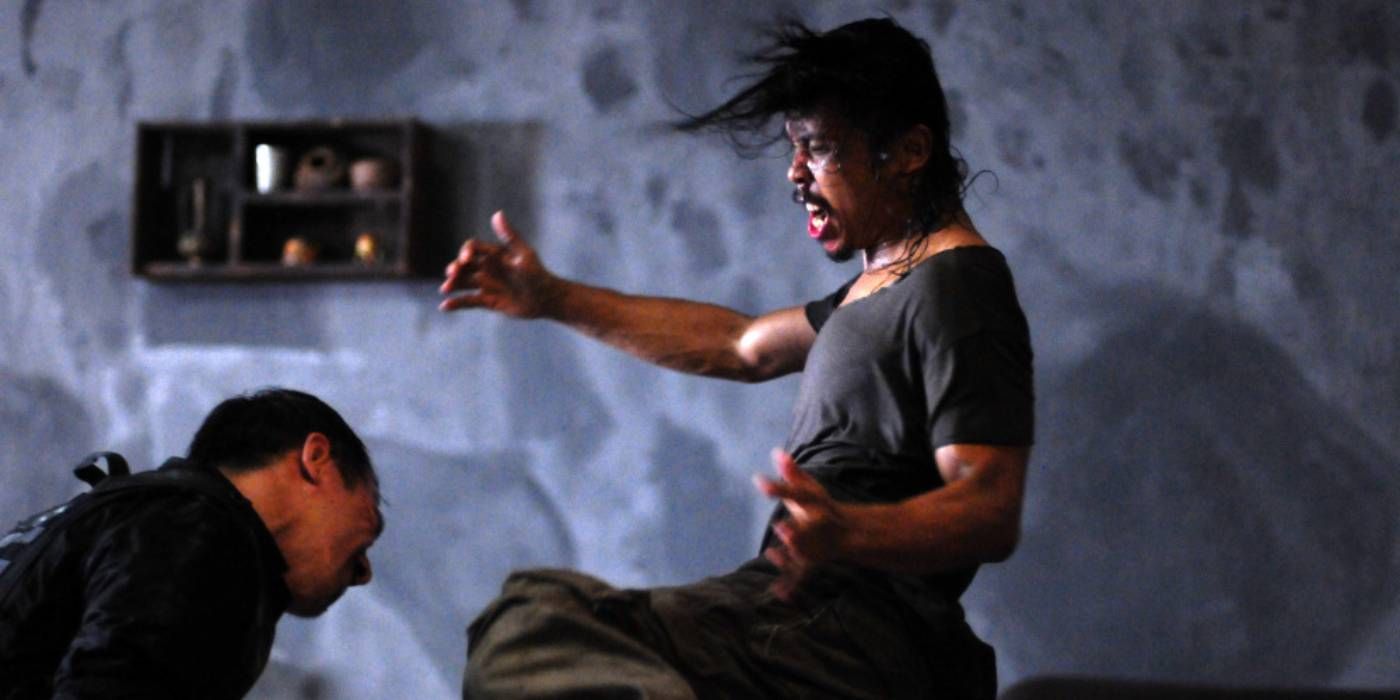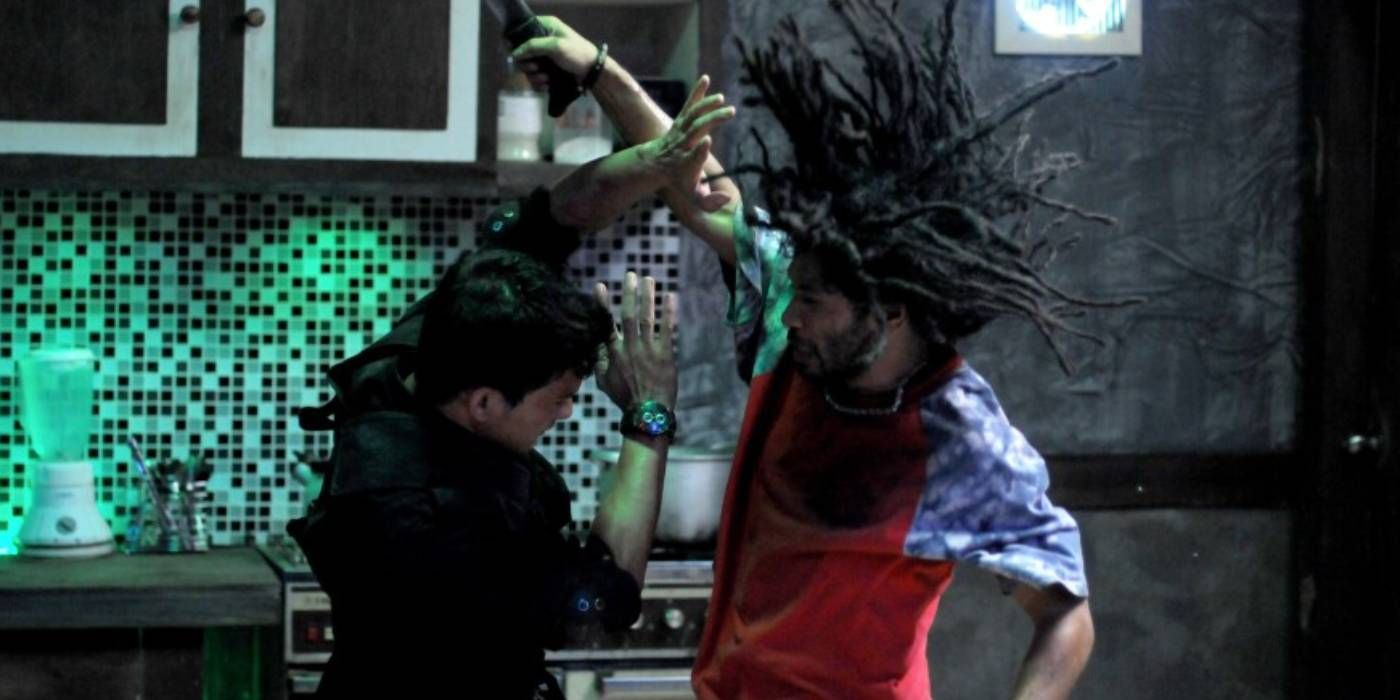
The Raid: Redemption might not be based on a video game, but it remains the perfect example of recreating the feel of a video game in a movie. Led by Pecak Silat martial arts exponent Iko Uwais and released in 2012, The Raid continues to be hailed a decade later as one of the greatest action movies of all time. It would later be followed by an equally acclaimed sequel, The Raid 2, in 2014, and the praise the two movies have received in subsequent years could not have been more earned.
Directed by Gareth Evans, The Raid follows a Jakarta police unit tasked with taking down an apartment complex full of criminals ruled over by ruthless crime boss Tama Riyandi (Ray Sahetapy). One cop on the team, Rama (Iko Uwais), secretly hopes to bring home his estranged brother Andi (Donny Alamsyah), who is in Tama's employ. Unfortunately, when the residents pick up on the unit's presence, Rama and his friends find themselves battling for their lives in savage, close-quarters combat that leaves their unit decimated.
Many positive critical reviews have likened the basic structure of The Raid to a video game amid its influence on martial arts movies and shows. Evans himself doesn't take offense to this comparison, calling it "a huge compliment" on The Raid's home media commentary track. Looking back on The Raid (which is slated for a remake) a decade after its debut, it is safe to assume that Evans accepts this compliment partly due to the movie's video game similarities being entirely intentional. Despite not having any ties to gaming itself, The Raid delivers the viscera and exhilaration of a beat-em-up style video game into a movie setting better than just about any other attempt ever has.

The Raid wastes no time in aligning its narrative behind the protagonist Rama. Like cut scenes in a video game, Rama's morning rituals and his team's arrival by police van to the apartment complex set the story in motion. As soon as the team arrives at the complex, they immediately begin to traverse one floor after another - evoking comparisons to the Doom horror video game and movie franchise. Then, once their cover is blown, the harrowing nature of the police unit's predicament becomes palpable, with Gareth Evans' movie demanding active participation through a series of bone-crunching scenes, not unlike the nature of a video game.
This approach also unveils another of The Raid's qualities, with The Raid essentially existing as a survival horror movie in the body of an action movie. Even in quieter moments, Rama and his teammates tip-toe across the halls, never knowing what to expect just around the corner. Hiding from enemies as they stab machetes through the walls in search of intruders, the terror felt by Rama and his friends is just as strong for prospective audiences. Like a version of a Resident Evil movie that swaps zombies for gangs of killers, The Raid is gut-wrenching cinema that demands attention with the creeping sense of dread it imparts. In the same way that a video game makes the surrounding world disappear and pulls players into its own, The Raid situates viewers alongside its cops in a scenario where escaping alive is the only goal.

The cast of The Raid, including Iko Uwais, Joe Taslim, Donny Alamsyah, Yayan Ruhian, and numerous others, are highly skilled martial artists. With this in mind, Gareth Evans shot the action scenes of The Raid with clarity and impact that seemed all but forgotten in the age where the shaky-cam of the Jason Bourne movies had dominated action films. What also made The Raid different upon release in 2012 was that its video game DNA was also crucial to its action scenes. Ascending from one floor or level to the next to reach the big boss at the top is only the most obvious comparison, but it doesn't stop there.
RELATED: Everything We Know About Netflix's Raid Remake
The set-up of The Raid frequently sees Rama and co. encountering opponents who seemingly come out of nowhere, turning corners or swinging open doors to jump into the heat of the fight. As The Raid nears its end, however, the last few fight scenes become more proactively geared towards Rama's final goal. After Rama and his fellow cops have to fight their way through a drug lab, Rama teams up with the captive Andi in a showdown with Mad Dog (Ruhian), who translates as essentially The Raid: Redemption movie's final boss. In this way, The Raid was rightly praised as elevating the standards of martial arts in action movies to new heights in 2012, with the movie's video game influences Evans and fight choreographers Uwais and Ruhian brought to the movie's fight scenes proving a crucial part of its rampant success.

It must be said that The Raid, in not having any actual video game lore to adapt, benefited by simply transplanting the template of a video game on-screen. In this regard, The Raid was arguably relieved of the burden of expectation that most video game movies have to contend with. However, while true at face value, this statement overlooks the fact that both The Raid and its sequel also showed the presence of mind to use limited parameters to create the most compelling experiences possible. Where so many video game movies throw everything they can at bringing their worlds to life, whether through special effects, big-name stars, or gaming Easter eggs, The Raid triumphs through its simple storyline that allows the film's taut action to take center stage.
Outside of Rama's introduction and relationship with Andi, The Raid devotes hardly any time to character development, and yet, Evans' movie emplores his audiences to care deeply about what happens to the entire team. Combined with the extreme finesse of The Raid's fight scenes, Evans has viewers fully enveloped in the story's stakes within minutes. The Raid, in mimicking so closely how an actual video game unfolds, invests its audience in the fundamental concept of survival. With that as its foundation, The Raid only uses what it needs to in order for the audience to feel how serious the situation is for the raiding cops - making The Raid: Redemption a stellar example of what a great video game movie can do with so little.
Comments
Post a Comment